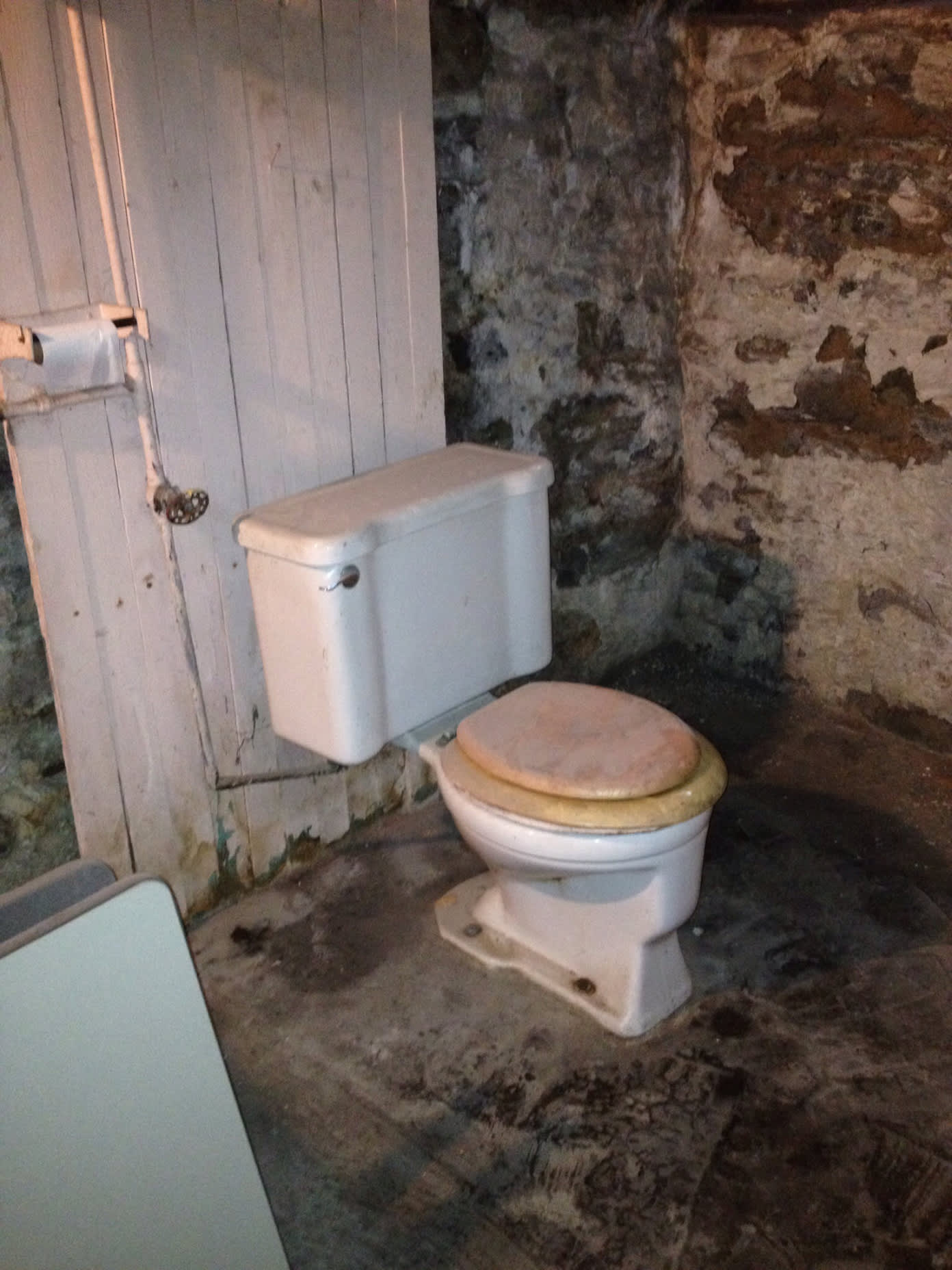5 Things To Do If Your Home Has This Rare Feature

For much of the United States, the unique home feature that is the Pittsburgh Potty might not be familiar. The prevalence of random toilets installed smack dab in the middle of unfinished basements are often the butt of jokes out in the American Northeast. But these purely utilitarian installations date back to the early mining days, when workers returned home and washed up in their unfinished cellars before entering upstairs neat and tidy.
Those native to Western Pennsylvania have learned to live with the random basement toilet. The appliance has even earned a reputation as a handy, no-frills solution for house party guests who, ahem, Launch a Lavatory Transformation
If you have a healthy budget for a bathroom upgrade, a rando toilet is definitely your green light. Consult a plumber to ensure your toilet is properly functioning, and then inquire about the logistics (and estimate!) for installing a working sink. Many basements with Pittsburgh Potties also come with a very basic shower. Upgrading that piece of the puzzle, or adding a shower to create a full bathroom, would be a major value-add to the home itself. Keep in mind that constructing a fully-functioning formal bathroom around a single toilet is a big commitment, but also a huge investment. Just be sure to consider all the additional features to be included — fixtures, flooring, drywall, electric, lighting, etc. — before diving in. Not every household has the budget or mental bandwidth to fully install an entire bathroom. Plus, a toilet in the middle of an unfinished basement totally takes away from the other uses for these spaces. These homeowners can work around the toilet by devising and installing a cover. Much like DIY radiator covers or water heater cabinets, a similar solution is possible for toilets. Covers can be fashioned to look like cabinets or shelving, or they can be treated like a partition and include hardware for hanging anything from cleaning supplies to artwork. Think of it like those plastic faux rocks that are used to conceal unsightly utility boxes outdoors. The more purposeful a disguise, the better. If you’re not using the unfinished basement for much else than storage and laundry, there’s technically no need to address the Pittsburgh Potty in question. tThat said, a little privacy could at the very least help make this appliance 21st-century functional. Depending on the toilet’s placement, consider installing a simple room divider. You can even purchase a bathroom stall kit from a commercial supplier, just like the ones found in public restrooms. When time, effort, and cash just aren’t in the equation, it’s time to round up the troops. Sit your household down and develop a system that allows everyone to access the open space toilet when needed, while maintaining privacy. There are plenty of ways to do this, and a conversation with your family or housemates will help identify the best solution for you. Some options for your “someone’s in here!” system include setting up a timed motion sensor mechanism for when your basement door opens and closes; designating a light switch to illuminate when occupied; and installing a good old fashioned vacant/occupied door lock. If leaning into the regional treasure that is the Pittsburgh Potty just isn’t your thing, upgrade the toilet by giving it a new home — at the curb. Naturally, toilet removal fees can start anywhere from a couple hundred dollars, depending on your location and the condition of your plumbing. I probably can’t endorse employing the services of your handiest friend and a series of online tutorials for self-removal… but I won’t stop you either!Gotta Go Incognito

Assemble a Budget-Savvy Enclosure
Develop An Outhouse Occupancy System
Flush Away the Problem